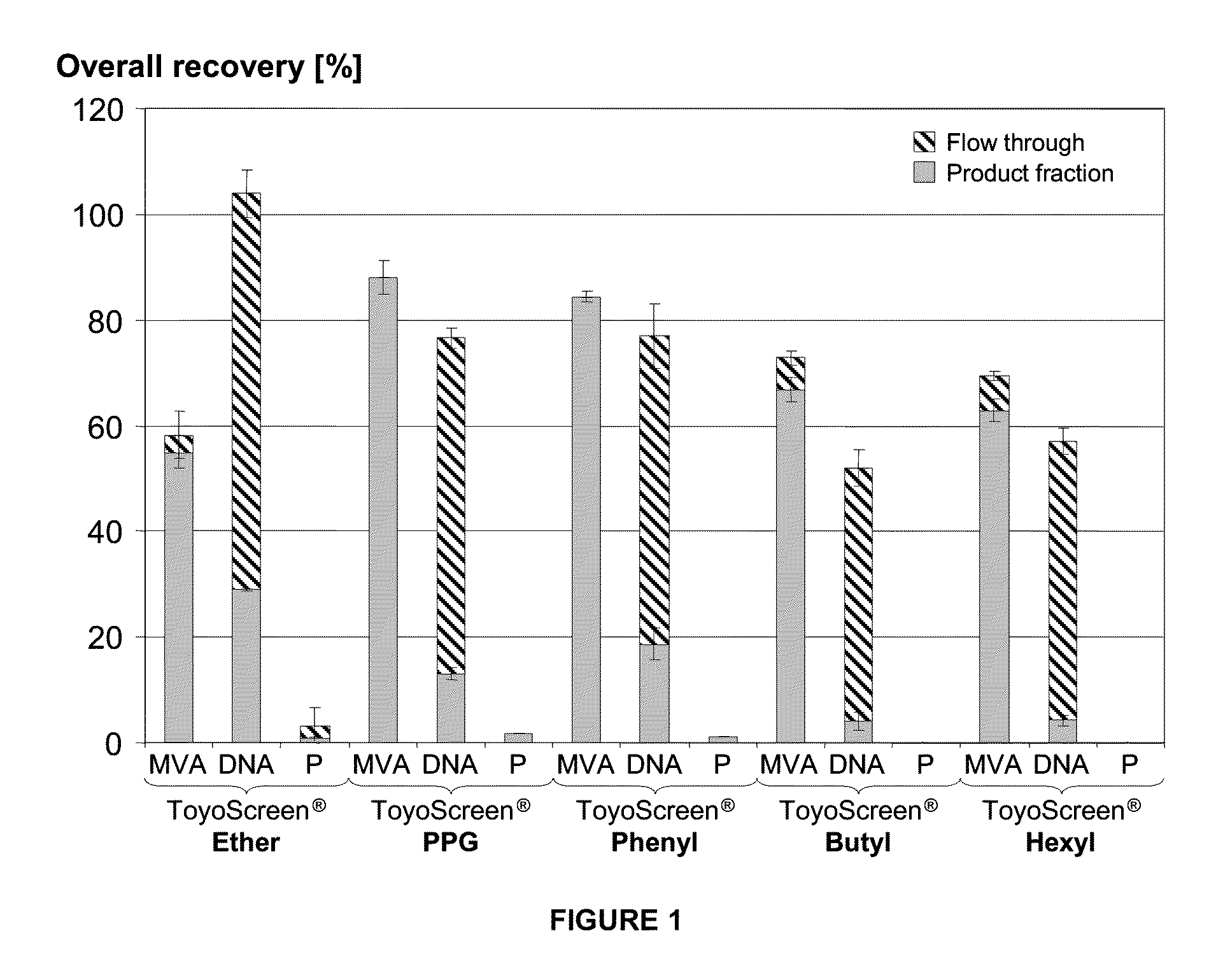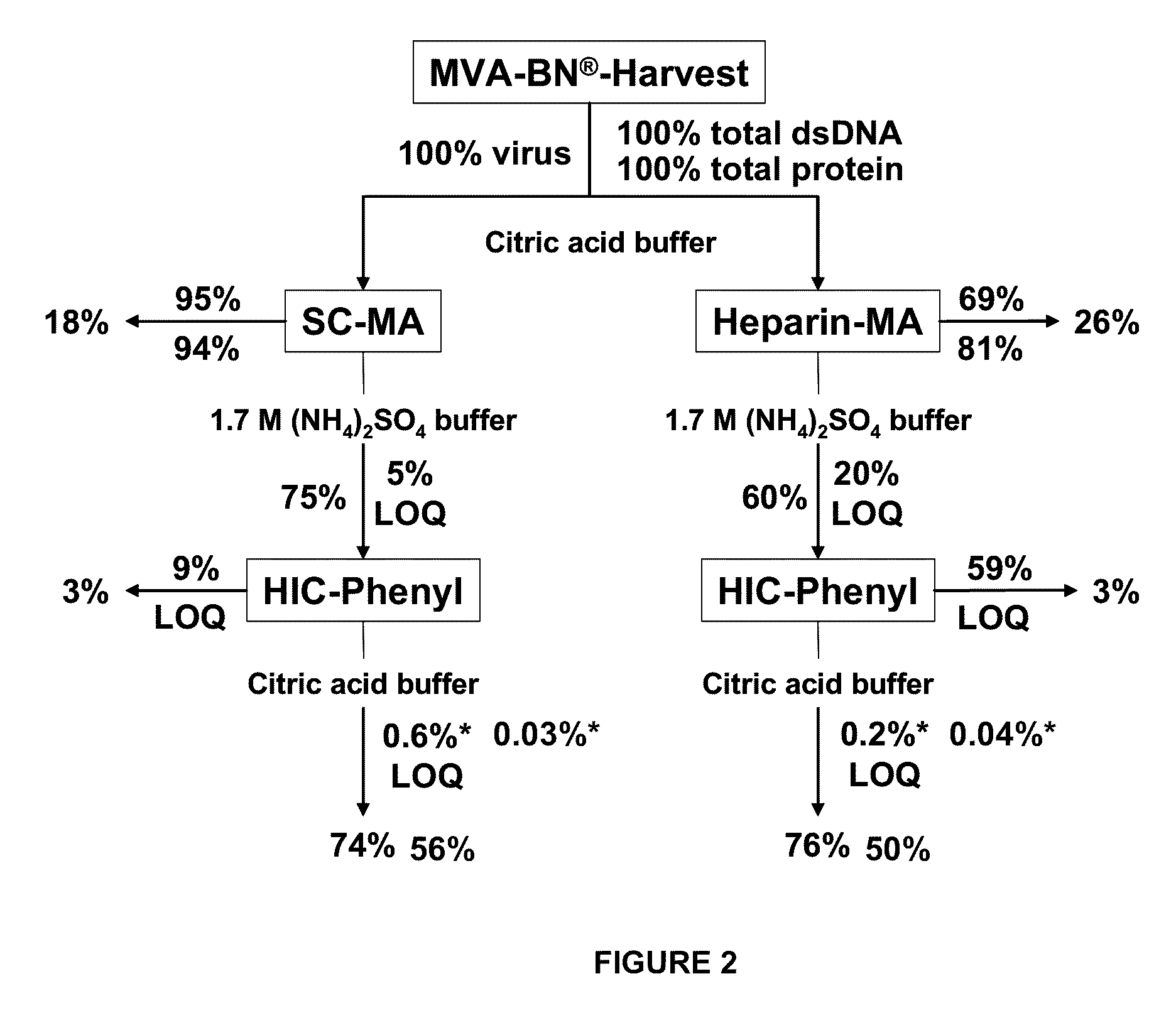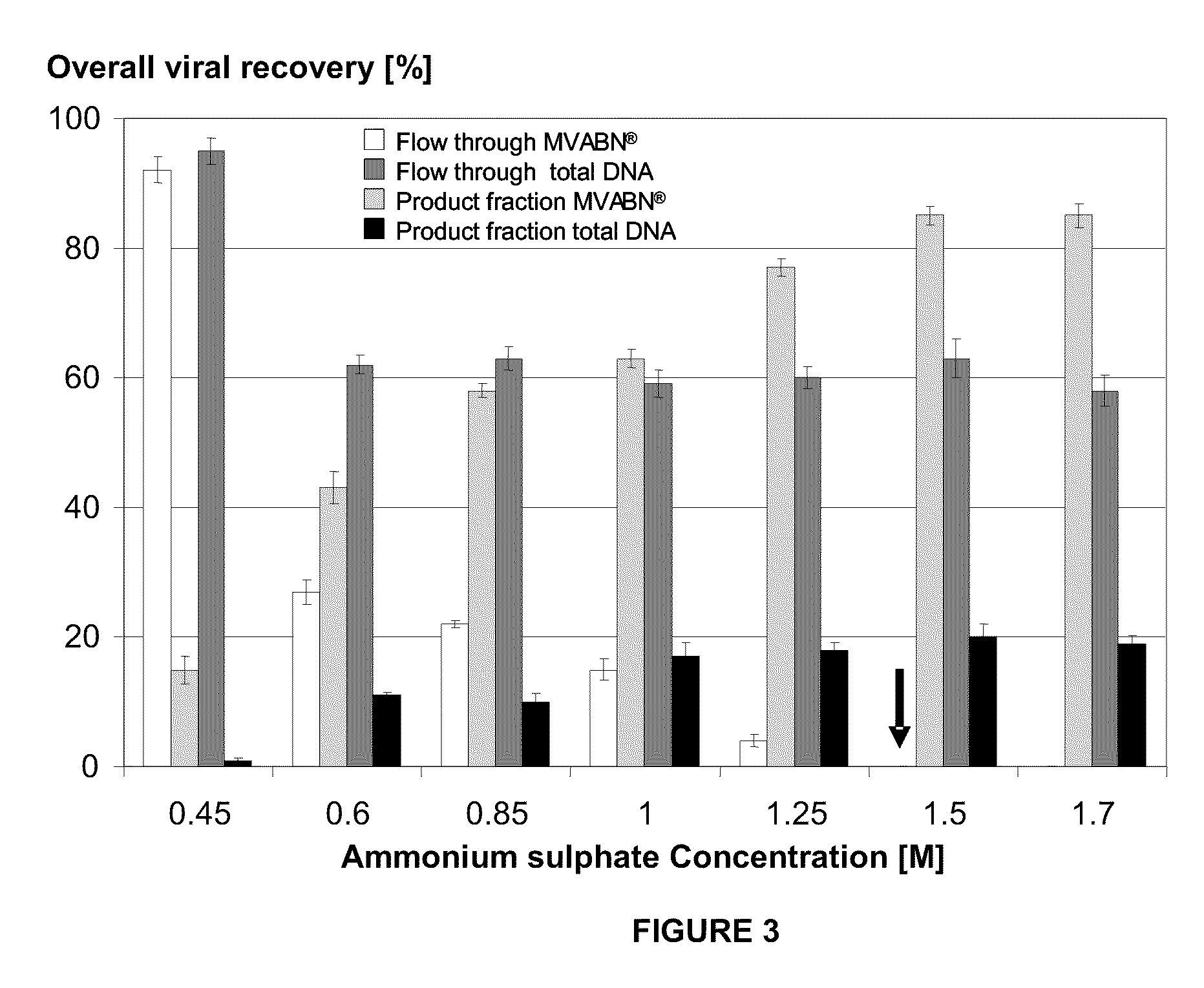Purification of vaccinia viruses using hydrophobic interaction chromatography
a technology of hydrophobic interaction and vaccinia virus, which is applied in the field of methods, can solve the problems of high neurovirulence, poor suitability for human and animal use, and potential mutation of poxviruses such as cowpox, camelpox and monkeypox
- Summary
- Abstract
- Description
- Claims
- Application Information
AI Technical Summary
Benefits of technology
Problems solved by technology
Method used
Image
Examples
example 1
Production of Modified Vaccinia Ankara Virus Particles
[0191]MVA-BN® virus particles were produced by Bavarian Nordic NS (Denmark) in primary cultures of CEF cells under Good Manufacturing Practice conditions (Vollmar et al., 2006). Different batches of the starting material were provided after homogenization and clarification as a liquid frozen product, stored in aliquots at −80° C. The initial TCID50 values of the samples were calculated.
example 2
[0192]Total protein concentrations were determined in triplicates by the Pierce® BCA protein assay reagent kit (Cat.# 23225, Pierce Biotechnology, USA) as recently described (Wolff et al. 2009). The assay was calibrated against albumin standards (BSA) (Cat.# 23209, Thermo Fisher Scientific Inc., USA) within the validated working range of 25 to 250 μg / ml (limit of detection: 8.3 μg / ml; limit of quantification: 25 μg / ml).
example 3
Quantification of MVA-BN® Virus Particles
[0193]Total MVA-BN® virus particles were quantified in triplicates by a sandwich ELISA as described previously (Wolff et al. 2009).
[0194]Infectious MVA-BN® virus particles were determined by the 50% tissue culture infective dose assay (TCID50) in Vero cells (ECACC; Cat.# 88020401, UK; 2.0×105 cells / well) as a variation of the procedure described by Jordan et al. (Jordan et al. 2009). Briefly, Vero cells were maintained in high glucose (4.5 g / l) DMEM-medium (Cat.# E15-009, PAA Laboratories GmbH, Colbe, Germany) containing 4 mM glutamin (Cat.# G-3126-250G Sigma-Aldrich, Munchen, Germany), 0.1% gentamycin (Cat.# 15710080, Invitrogen, Karlsruhe, Germany) and 10% FBS (Cat.# 3302-P280703, PAN-Biotech GmbH, Aidenbach, Germany) at 37° C. and 5% CO2. Serial 10-fold dilutions of the virus containing samples were added to Vero monolayers. After incubation (48 h) the cells were fixed with a 1:2 acetone (Cat.# CP40.3, Carl Roth, Karlsuhe, Germany): methan...
PUM
| Property | Measurement | Unit |
|---|---|---|
| diameter | aaaaa | aaaaa |
| volume | aaaaa | aaaaa |
| volumes | aaaaa | aaaaa |
Abstract
Description
Claims
Application Information
 Login to View More
Login to View More - R&D
- Intellectual Property
- Life Sciences
- Materials
- Tech Scout
- Unparalleled Data Quality
- Higher Quality Content
- 60% Fewer Hallucinations
Browse by: Latest US Patents, China's latest patents, Technical Efficacy Thesaurus, Application Domain, Technology Topic, Popular Technical Reports.
© 2025 PatSnap. All rights reserved.Legal|Privacy policy|Modern Slavery Act Transparency Statement|Sitemap|About US| Contact US: help@patsnap.com



